I had one bad incident with liquid fertilizer (fertilizer burn, ouch!) a few years ago and I’ve been using organic plant food ever since.
Just like all living things need a source of energy to grow, plants need a consistent supply of nutrients (like phosphorus, potassium, and nitrogen) to grow. I’ve found that plant food supplies these nutrients in smaller quantities, making it gentler for the plant and easier to use long term.
Since living in Mexico, it’s been hard to find healthy plants and also organic supplies to care for them. Luckily for me, Arber sent us their Indoor Kit, which not only includes organic plant food but also organic fungicide and insecticide too. I’m excited to try the organic plant food on our sad (but resilient!) indoor plants. As time passes, I’ll share updates at the end of this blog post.
For now, let me get into why I’m obsessed with organic fertilizers and plant food. Jump ahead to see how Arber shapes up.
Organic vs synthetic fertilizers
In gardening and agriculture, there are two main types of fertilizers: organic and synthetic. You might have seen synthetic or chemical fertilizers in stores before (think Miracle-Gro or Scott’s). If you haven’t, they’re usually water-soluble, highly concentrated, and made of inorganic compounds like nitrogen, phosphorus, and potassium.
In contrast, organic fertilizers are made of naturally-occurring materials like manure, compost, and plant matter. They release nutrients slowly, so they need to be applied more often than synthetic fertilizers. But since they break down slowly, they improve soil health in the long run and don’t have to be applied as often.
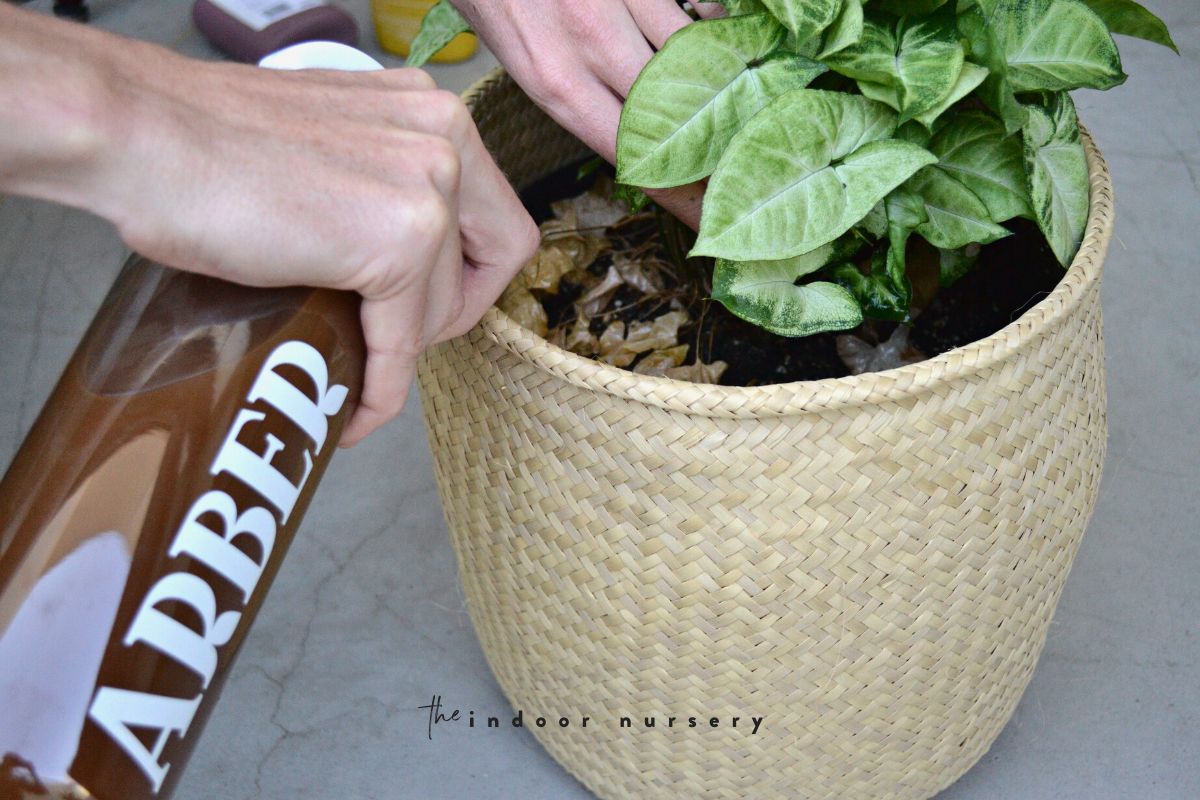
Benefits of organic plant food
Now that we know the difference between organic and synthetic fertilizers, let’s talk about the benefits of organic plant food. Here are a few reasons why I’m obsessed with organic plant food and think you should be too.
It’s gentle
Organic plant food is gentle, which is great for plants (and your hands!). I’ve found that organic plant food is less likely to burn plants than synthetic fertilizer because the nutrients are released slowly. That means you can apply it more often without worrying about harming your plants.
It’s sustainable
Organic plant food is more sustainable than synthetic fertilizer because it comes from natural materials. In fact, you could make it right at home! That means it’s not made with fossil fuels or other synthetic materials. Organic plant food is non-toxic, which is great for the environment. Synthetic fertilizers can pollute the air, water, and soil. Plus, since it breaks down slowly, it can be reused later on in the natural lifecycle and applied to other plants in other ways (i.e. via composting the dead leaves from the plant that you’re feeding). What I love about Arber’s organic plant food is that it is made from recycled supermarket food waste, ticking both the organic and sustainable boxes for me in a big way.
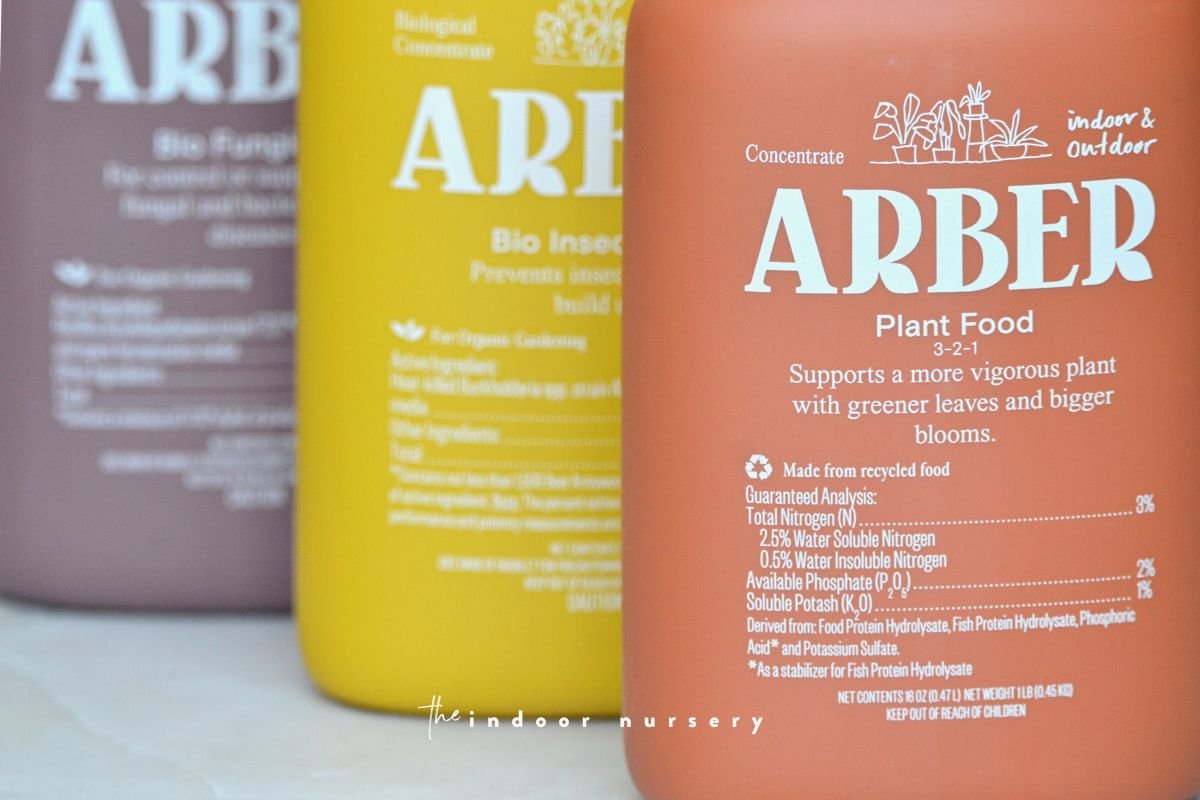
It improves soil health
Organic plant food contains organic material, such as mulch, like grass clippings, and kitchen scraps, like banana peels, coffee grounds, or egg shells. Some organic plant foods even include animal materials, like fish protein or bone meal. All of these items that you might find in a compost heap are rich with nutrients like nitrogen, phosphorus, and potassium (NPK). These nutrients are essential to plant growth.
This type of organic material also helps the soil retain water and nutrients, which is important for plant growth. It does this by creating a solid soil structure that allows nutrients to be “caught” rather than flushed through the soil. This soil structure is important for healthy root growth as it provides space for air to flow (aeration) and roots to grow. It also encourages microbial activity, which is important for healthy soil and plant growth. Microbes help to break down organic matter, making nutrients easier for plants to absorb.
It brings steady, healthy growth
Organic plant food provides a steadier supply of nutrients than synthetic fertilizer. That means plants can grow at a healthy, consistent pace. I’ve found that organic plant food is great for long-term plant health.
Common organic ingredients
The term “organic” means that all of the nutrients will come from a natural source, like compost, or other animal materials. Here are a few common ingredients you find in both an organic fertilizer as well as organic plant food.
- Bonemeal. Bonemeal is made from grinding up bones of animals. It is a good source of nitrogen, phosphorus, and calcium for plants. It also contains other essential nutrients, such as magnesium, iron, and zinc.
- Kelpmeal. Kelpmeal is a dried and powdered form of kelp, which is a type of seaweed. It is rich in nutrients, including nitrogen, potassium, and phosphorus, which makes it an ideal fertilizer for plants.
- Compost. Compost is made from breaking down organic matter, like leaves or kitchen scraps. (You can make your own compost with a worm composting bin!) It’s rich in nitrogen, which is essential for photosynthesis.
- Bloodmeal. Bloodmeal is a dried and powdered form of blood that is used as a fertilizer. It is high in nitrogen and phosphorus, which makes it ideal for promoting growth in plants.
- Blood, Fish and Bone. This is made from a combination of blood, fish bones, and animal bones. It’s a complete fertilizer because it contains all three of the essential nutrients: nitrogen, phosphorus, and potassium.
- Fish emulsion. Fish emulsion is made by grinding up fish and mixing it with water. It’s a source of nitrogen, phosphorus, and potassium for plants. It also provides other essential nutrients, including iron, zinc, and magnesium.
Now that we know the benefits of organic plant food, let’s talk about Arber.
Arber organic plant food: our experience
We’ve been waiting a long time to try these organic products from Arber. They shipped their Indoor Kit all the way to Mexico, where we currently live, and after finally getting through customs and Mexico mail, it arrived at our door.
My first impression was that the packaging was adorable. Everything came in cardboard and the packaging seemed compostable, apart from the bottles.
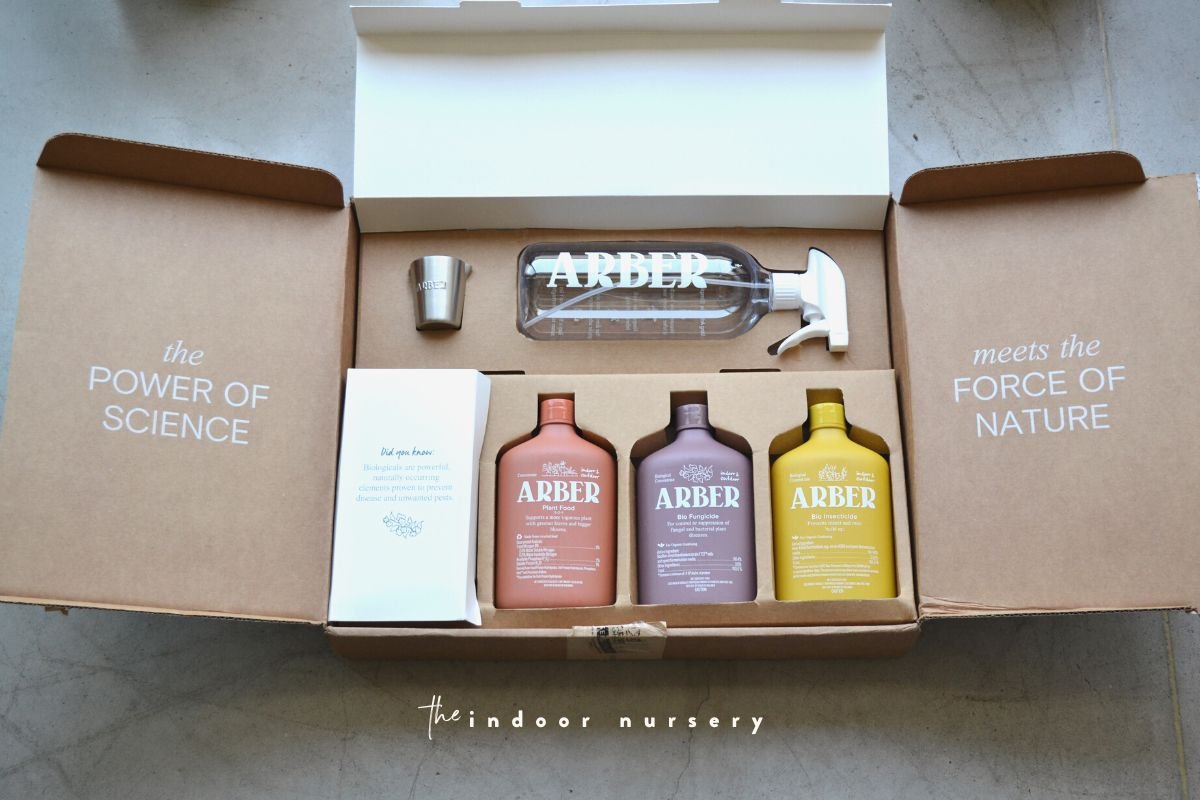
There were clear instructions on the bottles and the spray bottle and measuring cup were a nice touch. I love the measuring cup, especially. It’s the perfect size and is clearly marked so that you can easily measure out your liquids. It’s also stainless steel, meaning that it won’t stain or grow a funky smell.
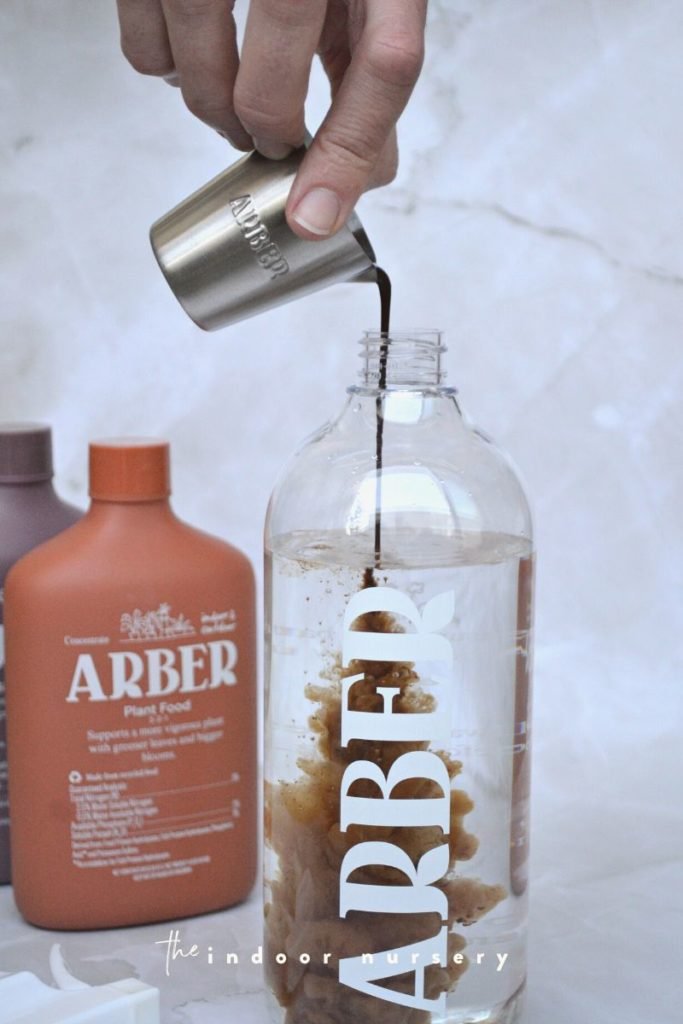
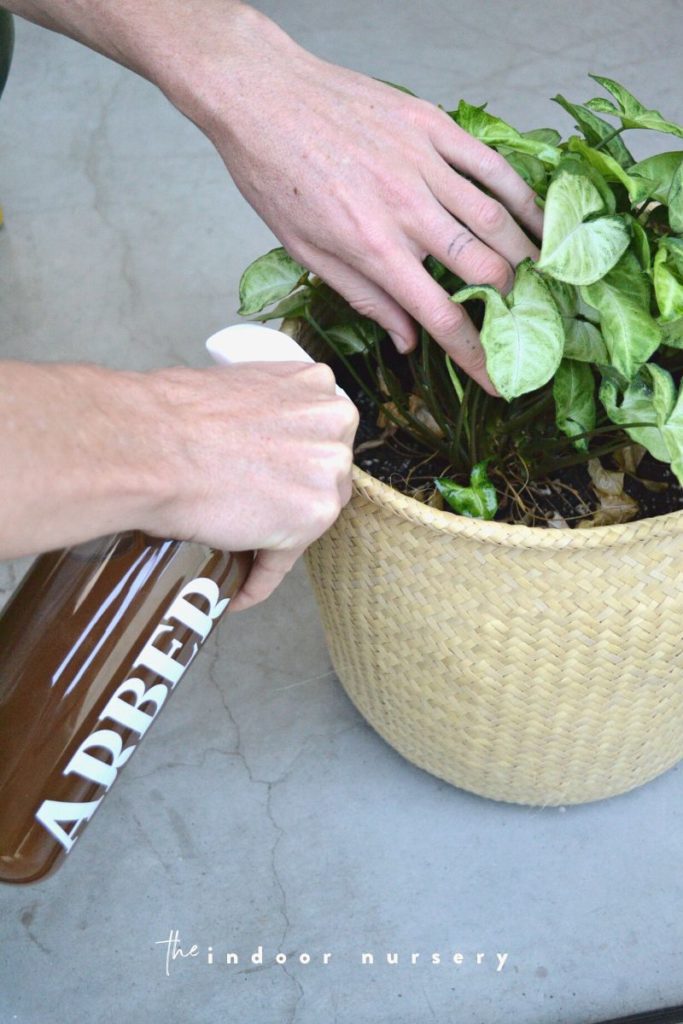
Today, I’m trying Arber’s organic plant food. I mixed 2 ounces of the plant food into the spray bottle and sprayed the soil of all of my plants.
Arber Plant Food fresh growth:
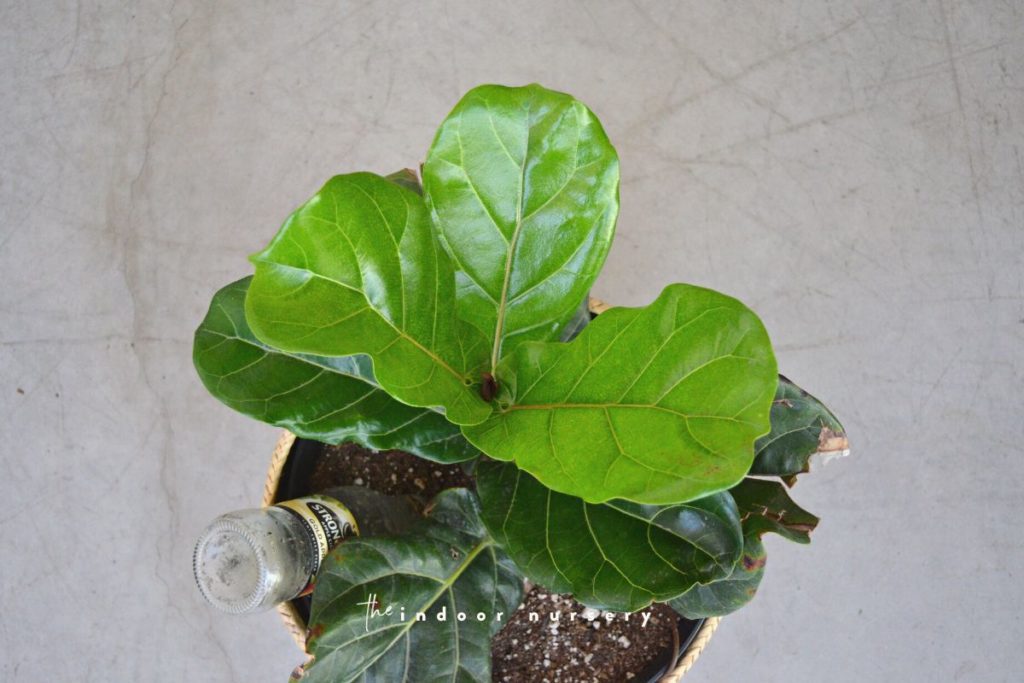
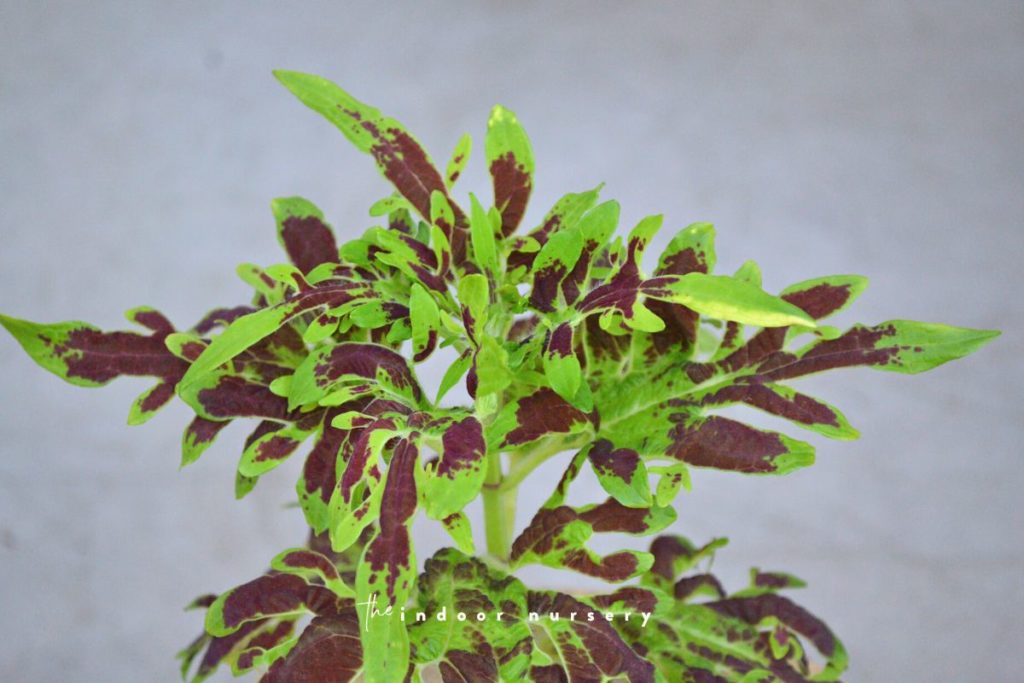
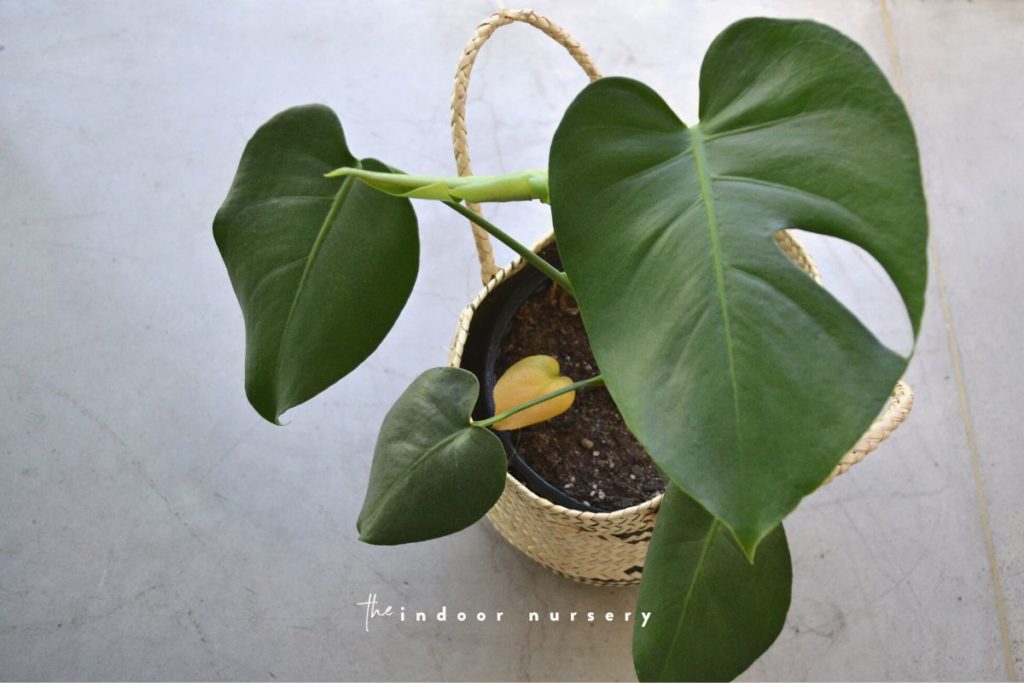
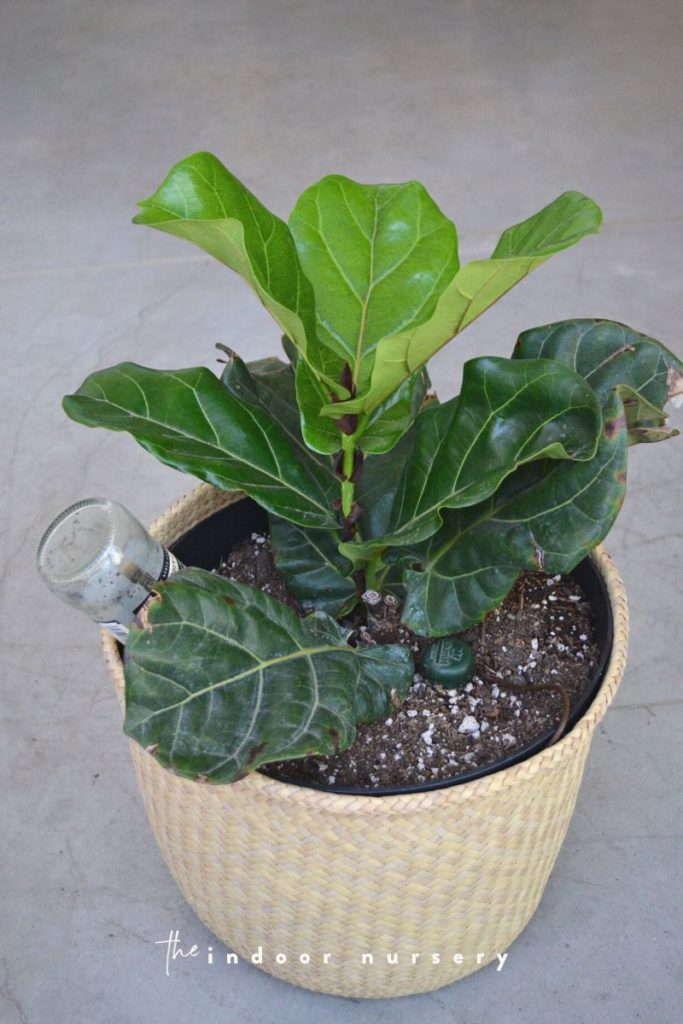
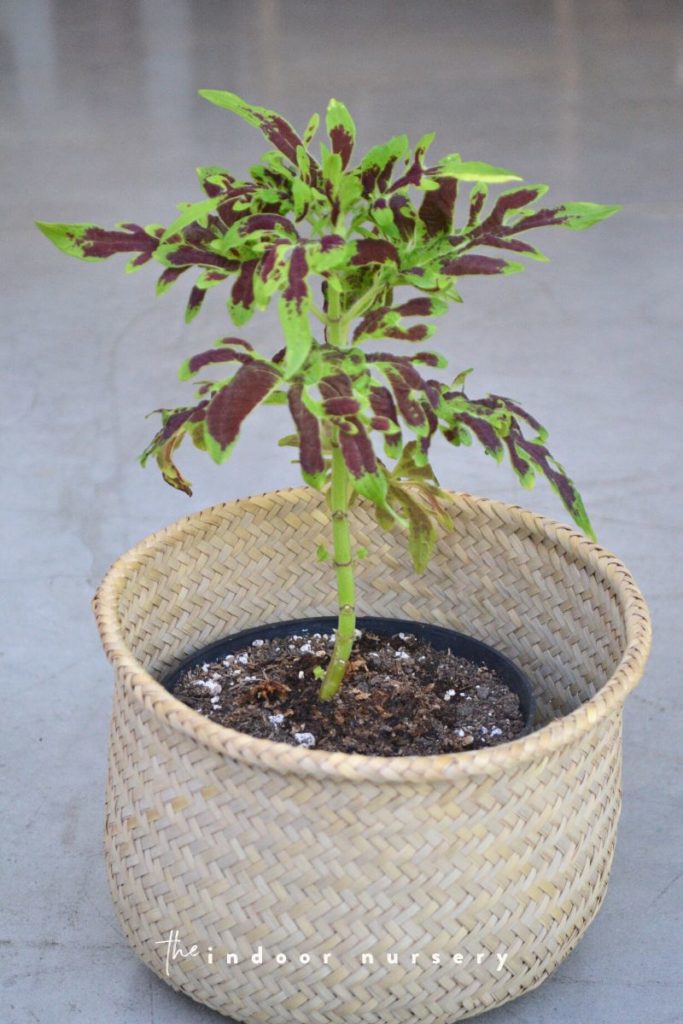
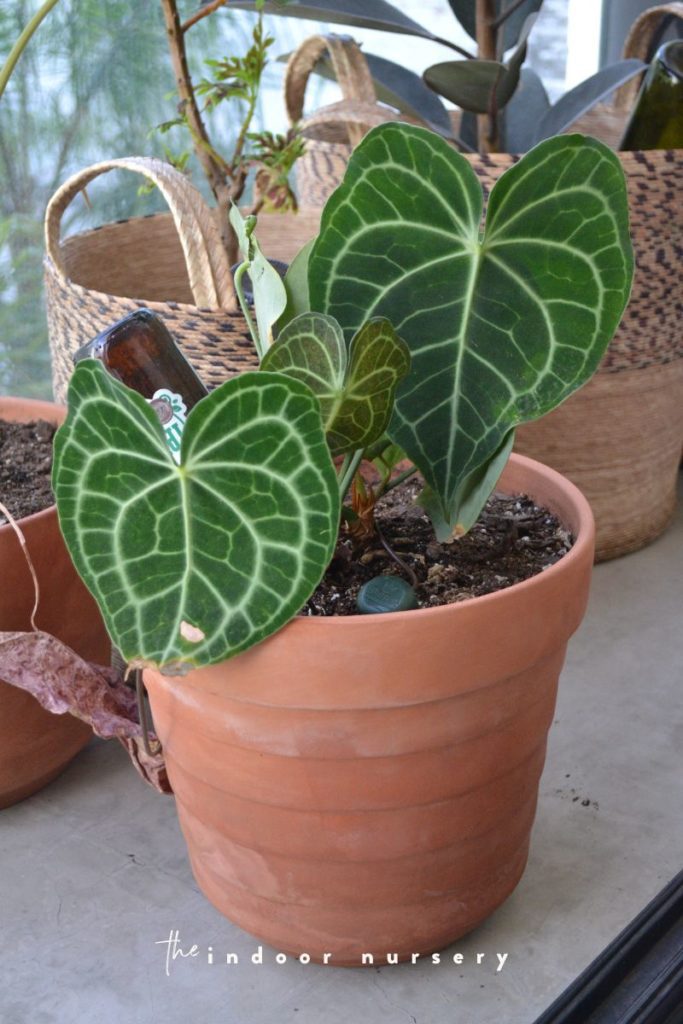
Of all of the organic options out there, I’m most excited to work with Arber. Not only does their organic plant food supply a great source of nutrition, but Arber also follows sustainable practices from start to finish. From collecting scrap vegetables, fruits, and other kitchen scraps from supermarkets to delivering the nutrient-rich plant food in compostable materials, Arber is the kind of brand that I want to be leading the industry.
I’ve got a small case of mealy bugs on my Swiss cheese plant that I’m excited to try their Bio Insecticide on, but that’s for another post. I also accidentally overwatered a few plants while on vacation (using my indoor drip irrigation system), so a couple of plants are suffering from major root rot and could use a bit of Arber’s Bio Fungicide treatment.
PRO TIP: These make great gifts for plant lovers 😉
More about fertilizing
- 10 Best Worm Composter Bins For Easy Homemade Compost
- Compost Starter 101: When You Need It And How To Make It
- Our top pothos fertilizer picks for luscious vines
- 5 reasons to use coffee as fertilizer for your plants
- Best fertilizer for Monstera plants for gorgeous leaves
- Fertilizer Burn on Plants? Here’s How to Fix it
- Fiddle leaf fig fertilizer: How to feed your fiddle leaf

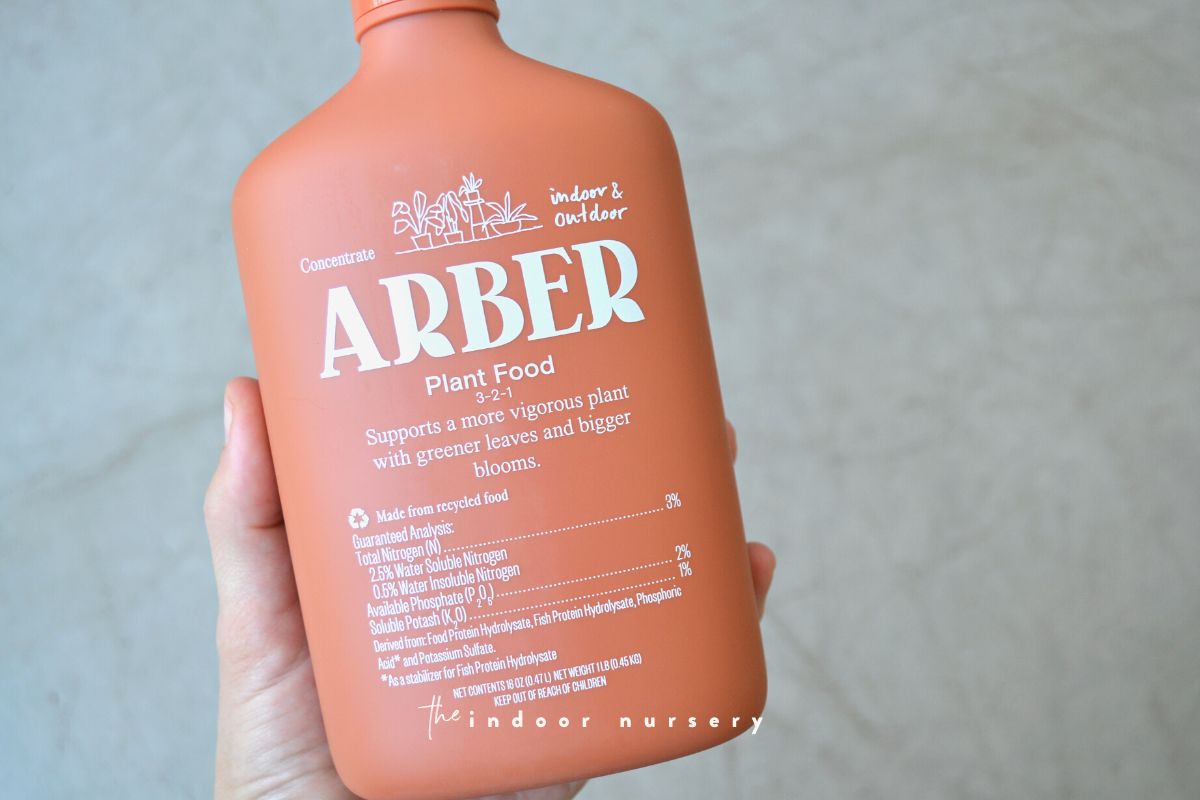
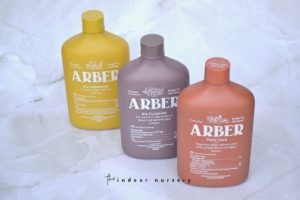
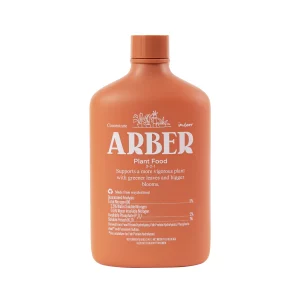
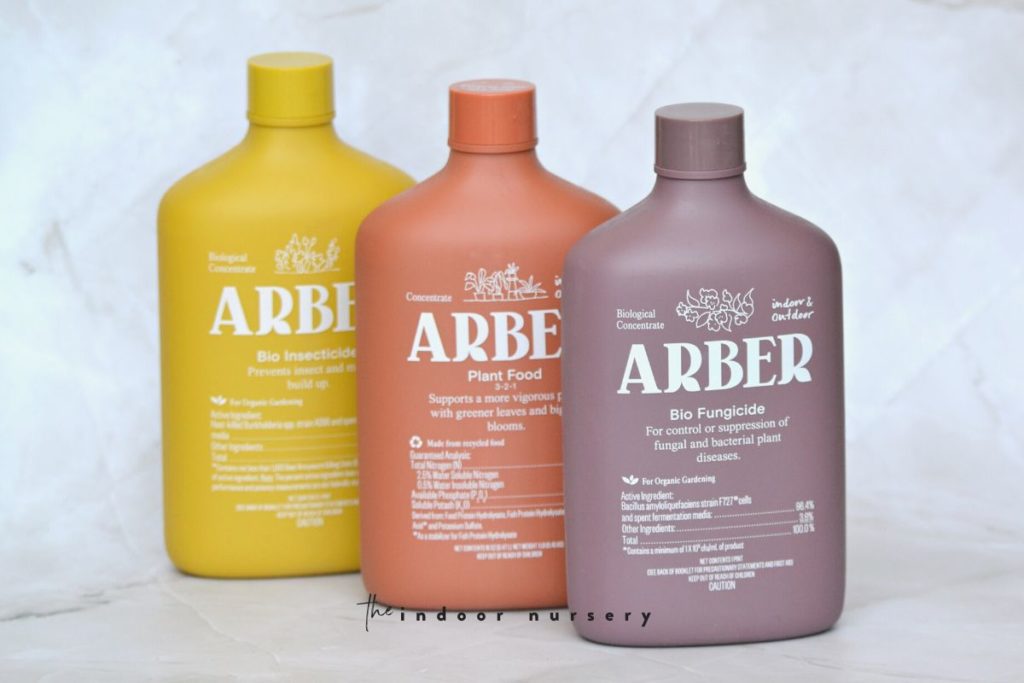
Okay but I’m dying to see the afters!! I got the Arber products, insecticide, fungicide, plant food and bio protectant, first for my strawberries and also rhubarb potatoes and asparagus. I just used the food for the first time on my berry plant and I’m super hopeful cause it’s looking kinda pathetic. I saw i got aphids so I added some more insecticide, i used a tiny bit before to test the plant and it seemed to work pretty well for a few days. I hope the rest of your review is as good as it started. My plant really needs some help 🙁 I could use some reassurance!
Hi, Ariel! How’s it going after a bit of time has passed? I hope that the diluted insecticide helped with your aphid situation! If not, then introducing live lady bugs might be a gentler all natural solution. You know, I never got photos of the “after” 😭 I ended up moving away and things got so hectic that I forgot to grab some pics. I remember that the plants mostly pushed out a few new leaves and looked awfully perky! Nothing substantial but definitely noticeable. As for the insecticide, I found it to be too harsh for my weak plant yet not strong enough for the mealy bug infestation. That being said, I had applied it pretty liberally since the infestation was so bad. I don’t recommend that if your plant is weak, which mine was. I just couldn’t be bothered to hand wipe the entire plant down with cotton swab and rubbing alcohol first!